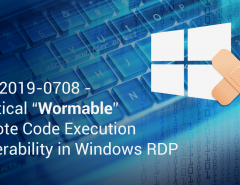Data breaches have now become a common occurrence but with myriad legislations in place— including the likes of GDPR— stakes for the enterprises are at an all-time high. When it comes to handling a breach, companies depend on the respective IT departments. However, it is important that a concerned administrator or department is equipped with innovative ideas for staying ahead of the potential breach or security incidents. Although it is desirable to stay adrift of the security incidents, it is practical enough to understand the after effects of the same.
Understanding the difference between Data Breach and Security Incident
Although the distinctions are minimal, a data breach is a more serious interpretation of a security incident. The latter, on the other hand, also includes the likes of DDoS, website defacement and impersonation occurrences that do not involve personal data thefts.
Even the General Data Protection Regulation draws guidelines for the more targeted issue, i.e., data breaches. Although the bigger picture involves concentrating on breaches, enterprises must be aware of the security incidents which can have massive repercussions if ignored.
Read more: Impact of data breach on Startups
Developing an Incident Response Plan
Most organizations falter when it comes to developing, processing and implementing a response plan for multiple security incidents. Creating the response plan can be costly and time-consuming at the same time, and this is why certain organizations prefer working without one in place. That said, enterprises with a response plan onboard are better off at controlling an incident; thereby isolating the affected areas from the unaffected ones.
Not just that, according to a survey, at least 26 percent of the respondents are unsure about the existing incident response plan. However, despite the lack of confidence, the knowledgeable IT security pros prefer implementing the response plan as they understand that an incident, if not controlled can quickly escalate into a catastrophic data breach. Based on the global surveys, reputational damage tops the chart with 56 percent claiming it as the major after-effect of a security incident. Loss of system availability and compliance issues follow the list of after-effects further followed by remediation costs and loss of IP. With these potential pitfalls to deal with, IT professionals must now be more aware of the incident response plans which they often ignore due to the lack of resources, lack of financial support, time constraints and a host of other reasons.
Dealing with the After-Effects of a Security Incident
Understanding the after-effects of a security incident should also concern minimizing the additional risks and damages. Most companies start panicking when a breach is encountered. While this is a natural reaction, pulling the plug and shutting down the system aren’t the solutions we are looking for. Business continuity should be the prime focus, and therefore, it is advisable to gauge the nature and even the extent of the security incident.
As mentioned previously, a security incident can cause substantial reputational damage. This is where data analysis comes to the fore as it minutely analyzes the underlining causes and even possible solutions. The best way to deal with the aftermath of a security incident is to understand the reasons leading to the same.
With compliance issues encountered after a security incident, it becomes all the more important to focus on the internal communication especially down from the board level. However, as a part of the incident response plan, any form of communication must occur via established and secured channels.
Lastly, an organization with an incident response plan in place should look to resolve the issues and recover from the breach. An after effect that plagues most industries is the excessive remediation costs for putting the systems back to work. However, this anomaly can be dealt with using proper budgeting and by correctly estimating the liabilities.
Bottom-Line
For an organization that faces a data breach or a minor security incident, it is tough to recover from the existing scenario. However, understanding the after-effects and aftermath of a breach, via an incident response plan is what helps the enterprise stay prepared and respond appropriately.
As an IT security partner for your business, Seqrite provides comprehensive endpoint security from advanced cyber threats. To know more, visit our website or




